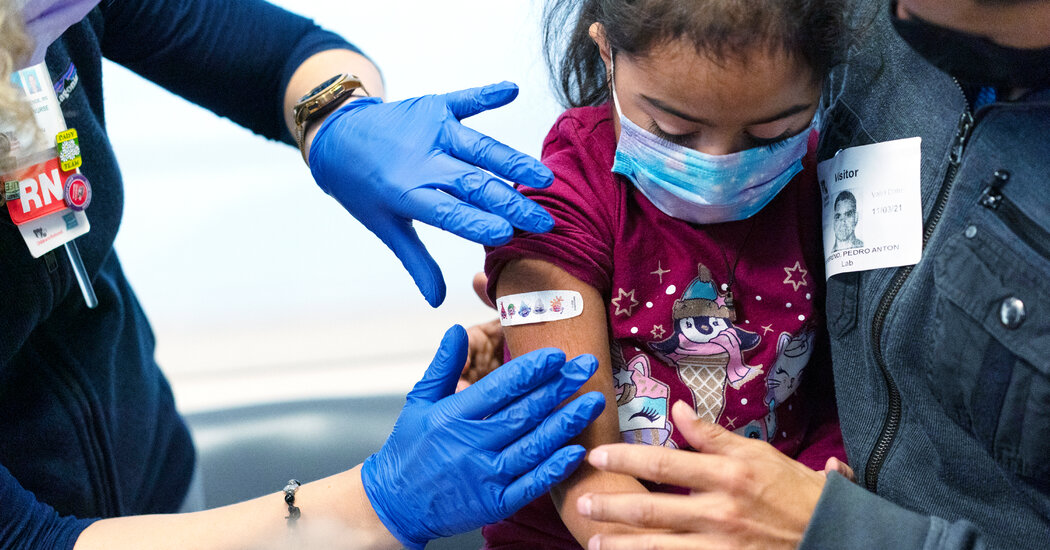
In deliberations over whether to recommend Covid vaccines for young children, scientific advisers to the Centers for Disease Control and Evaluation on Friday wrestled with the complexities of evaluating two very different vaccines, and with limited data.
The advisers are tasked with making recommendations for use of the Moderna vaccine in children 6 months through 5 years old, and the Pfizer-BioNTech vaccine for children 6 months through 4 years old.
Both vaccines seem to be safe for children, and the committee members had few concerns about side effects. But the advisers ended the first day of their meeting with pointed questions for Pfizer about the efficacy of its vaccine and the number of doses required to achieve it.
The two vaccines differ in almost every aspect. For young children receiving the Moderna vaccine, the Food and Drug Administration has authorized two doses of 25 micrograms each, one-fourth the amount used for adults, spaced four weeks apart.
But according to the data presented on Friday, two doses of the Pfizer vaccine — each just three micrograms, or one-tenth of the adult dose — fell short of producing strong immunity against the virus in young children.
To be effective, the Pfizer-BioNTech vaccine will need to be administered in three doses: the first two spaced three weeks apart, and a third at least two months after that.
Pfizer has reported that three doses of its vaccine has an effectiveness of about 80 percent against symptomatic illness. But that estimate is based on infections in just three children who were immunized in the company’s trials, the C.D.C. committee members noted.
“In the interest of sort of full transparency to parents, it’s to me appropriate to acknowledge the uncertainty around that,” said Dr. Matthew Daley, a senior investigator at Kaiser Permanente Colorado who leads the C.D.C.’s vaccine working group.
Assuming the advisers back the vaccines, the C.D.C.’s director, Dr. Rochelle Walensky, is expected to sign off in short order. States have already acquired millions of doses and will be prepared to offer shots to children as early as Tuesday.
Pfizer’s vaccine has been available to children aged 5 through 11 since November, but less than 30 percent of them have received two shots.
On Friday, the panelists also spent considerable time trying to pinpoint how the Omicron variants have altered the risks to children. They noted that parents vaccinate their children for many other diseases with comparable, or even lower, risks of death.
The data “should just decimate the myth that this infection is not life-threatening in this age group,” said Dr. Sarah Long, a panelist and an infectious diseases expert at Drexel University College of Medicine.
Unvaccinated people aged 5 and older had 10 times the risk of dying of Covid-19, compared with those who received at least two shots of the vaccine, Dr. Daley said. The figures “provide real world-evidence that most deaths from Covid-19 are preventable through vaccination,” he added.
Acceptance of the vaccines will depend partly on how clear the C.D.C.’s recommendations are. The F.D.A. authorization permits vaccines to be used, but doctors look to the C.D.C.’s advisory committee for specifics on how to use them.
Some studies have suggested that the vaccines might work better if the interval between doses is extended, and the C.D.C. now says children 12 and older and younger adults at low risk of Covid-19 may consider getting their second dose of vaccine eight weeks after the first.
But the United States has not collected the information needed to determine the ideal interval for young children, Dr. Doran Fink, a senior F.D.A. official, said on Friday.